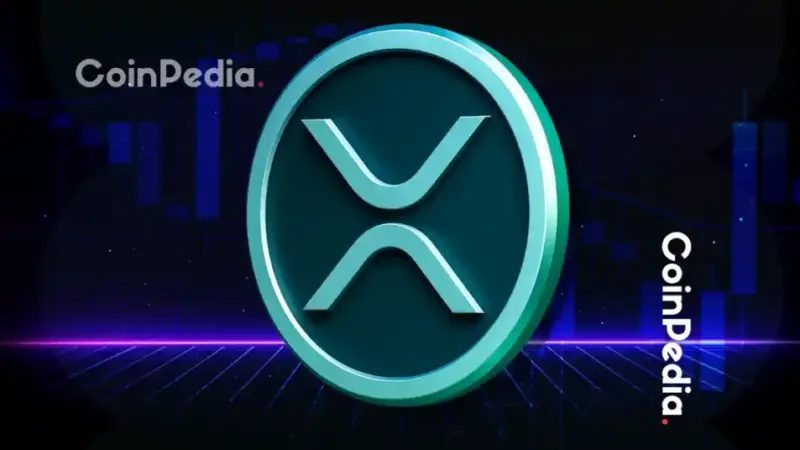Understanding Blockchain Networks and Nodes


The post Understanding Blockchain Networks and Nodes appeared first on Coinpedia Fintech News
Introduction
Blockchain technology has brought a great digital revolution that has changed our perspective on transactions, security, decentralization, and transparency. This article focuses on a comprehensive understanding of Blockchain Networks and Nodes. Nodes and Networks are the pillars of the architecture and functionality of blockchains. The developers need to master these concepts for effective blockchain development and keep in mind the vast domain of applications in various industries like finance and supply chain management.
What is a Blockchain Network?
A blockchain network is basically a distributed ledger or record system where multiple devices share and validate information about transactions transparently.
Key components of the Blockchain network are:
- Nodes: Computers or devices that participate in the network
- Ledger: A database or digital record of all the transactions
- Smart Contracts: Smart Contracts are termed as high-level programs that compile to EVM byte-code and also a pre-stage for deployment on the Ethereum blockchain. It allows us to perform reliable transactions that are secure without any third-party interference, traceable and irreversible
- Consensus mechanism: A set of protocols that needs to be followed by the nodes in the network on the state of the blockchain.
Types of blockchain networks:
- Public: As the name suggests it is open to everyone. Any one entity does not control the Public Network. These networks are decentralized and transparent. Examples are Bitcoin and Ethereum and general use cases are dApps.
- Private: Private networks are restricted only to those who are authorized. They are controlled by a single organization. Examples are Hyperldger Fabric and Corda and general use cases are supply chain management and enterprise solutions.
- Consortium: A consortium network is a blend of both public and private networks,controlled and managed by a group of organizations. It is partially decentralized offering transparency up to a certain level. Examples are Quorum and Energy Webchain. Typically used in industry collaborations and consortium-baed applications.
- Hybrid: It is a combination of public and private network attributes. The access to the hybrid network is customizable with some data being public and some being restricted. Example Dragion chain used in customizable enterprise solutions
Nodes in Blockchain
Nodes can be referred to as the individual devices or computers that are part of the blockchain network and follow the protocols. Nodes are an inevitable part of Blockchain as they maintain a copy of the public ledger and participate in consensus mechanisms.
Types of nodes:
- Full nodes: Full Nodes are the devices that maintain a complete copy of the blockchain. These nodes play a crucial role in validating the transaction blocks and ensuring the integrity of the security of the blockchain. These are considered to be the secure and trustworthy nodes.
- Light nodes: Light Nodes just store the header of the block which is a subset of the blockchain data. Light nodes depend on full nodes for transaction verification and validation.
- Mining nodes: These nodes participate in the network by solving cryptographic puzzles aka mining. Mining nodes provide security to the network by validating the transactions and also help maintain security through Proof of work (PoW).
- Master nodes: Master nodes perform special tasks such as validating instant transactions or participating in governance. It improves the functionality and enhances the stability of the blockchain. Due to the computational functionality, it needs huge power resources.
Setting Up and Configuring Nodes
Guide to setup different types of nodes:
- Full Node:
- Install Blockchain client software like Bitcoin Core or Geth.
- Download the data of the chain and sync with the network
- Configure the settings like storage and bandwidth. etc
- Light Node
- Install Client software like Electrum for Bitcoin or MetaMask for Ethereum.
- Sync them with the full nodes to verify the transactions
- Configure for optimal performance
- Mining Node
- Install software like CGminer or Ethminer
- Join a mining pool for collective efforts and rewards
- Configure to get optimum results
- Master Node
- Check the collateral requirements before setting up
- Install the specific software concerning the blockchain
- Configure for better performance and efficiency
Configuration best practices.
- Regularly update the software
- Take care of the security measures by implementing firewalls and antivirus
- Ensure appropriate resource allocation
Security considerations for nodes.
- Use encryption for data transmission
- Ensure protection against DDos Distributed Denial of Service attacks
- Regularly audit the security parameters
Network Topologies
Network topology is the arrangement of interconnections between the nodes in the network. Topology outlines and explains how the devices communicate, transmit, propagate the transactions, and reach consensus. Appropriate choice of topology is necessary for the efficiency, scalability, and security of the network.
Common topologies used in blockchain networks.
- Peer-to-Peer (P2P) Topology: In this topology, each node is directly connected making all nodes equal participants. This topology makes a decentralized network where all nodes can initiate and validate transactions. Bitcoin uses P2P network topology.
Pros:
- Decentralized
- Resilient
- Secure
Cons:
- Propagation delays are directly proportional to the growth of the network
- Multiple connections lead to a high overhead of bandwidth.
- Federated Topology: Federated topology allows only the authorized ones to participate in the consensus and others just can join this topology but can’t validate. This is also known as a Consortium network.Popularly used in Ripple
Pros:
- Efficient and fast due to lesser nodes in the process
- It is scalable due to higher throughput
- Controlled access enhances security
Cons:
- More centralized hence creates trust issues
- It needs robust mechanisms for governance.
- Hybrid Topology
As the name suggests it’s the combination of P2P and Federated topologies.It supports multiple layers and permissions to groups of devices and maintains decentralization. Dragonchain uses Hybrid topology.
Pros:
- Efficient and fast as it is a mix of P2P and Federated topology.
- Flexible and customizable.
Cons:
- Complex design and implementation
- Up to a certain level can incline towards centralization.
Consensus Mechanisms
Consensus mechanisms are a set of protocols that should be followed by the nodes in the network to agree on the state of the ledger. These mechanisms are used for the validation and authentication of transactions.
Popular consensus algorithms:
- Proof of Work (PoW): Proof of Work is also known as mining. In this consensus mechanism, the users have to solve cryptographic puzzles that reward them.It is a contest where the first one to solve gets to ass the new block. This algorithm uses hashing to secure the blockchain. The difficulty of PoW puzzles ensures the blockchain remains secure and controls the rate at which new blocks are added.
- Proof of Stake (PoS): Proof of Stake selects validators based on the number of coins they have and the stake as collateral. The selection process just doesn’t depend only upon the stake but also on factors such as the age of the coin and randomness. Validators having the lowest hash value and highest stake amount are chosen to add the new block. PoS is more energy-efficient than PoW. This mechanism is implemented in Ethereum 2.0.
- Delegated Proof of Stake (DPoS): Uses delegates and reputation for validation of the transaction.Used in EOS
- Practical Byzantine Fault Tolerance (PBFT): The voting mechanism of the nodes is used to validate. This is highly fraud-tolerant and used in Hyperledger fabric.
- Proof of Authority (PoA): This mechanism uses pre-chosen entities for validation.Used in VeChain.
Node Communication and Synchronization
You must be wondering how nodes communicate within the network. The answer is similar to what humans do, Nodes discover other nodes using protocols like Gossip and then propagate the messages. Interesting right?
The synchronization process of nodes involves two steps, firstly initial sync where you download and verify the sync, and the Ongoing sync which just needs to update with new transactions
Techniques to ensure efficient and secure communication should be:
- Use of optimized and efficient protocols.
- Encrypt the data
- Use Redundancy to avoid loss of data.
Challenges and solutions in node communication:
- Improve latency by implementing high-speed connections and protocols
- Ensure strong encryption and DDoS protection
- Ensure the use of Scalable topologies
Monitoring and Maintaining Blockchain Networks
Tools and techniques for monitoring blockchain networks:
- Prometheus
- Grafana
- Block explorer
The performance of the network depends upon the latency, throughput, monitor node performance, and block creation time.
Maintenance practices for nodes.
- Regularly update the software
- Always be in check of the security patch used.
- Routine audits
Troubleshooting common issues are connectivity problems and synchronization issues.
Ensuring availability and reliability by implementing redundancy and using load balancing techniques.
Scalability and Performance Optimization
Challenges in scaling blockchain networks
- Transaction Throughput
A lot of networks face the lower throughput issue while processing a higher number of transactions per second. The traditional consensus mechanisms can be slow and resource-intensive.
- Storage
Another major challenge faced is storage as the blockchain grows the amount of data also increases which affects the storage capacity and the data retrieval efficiency.
Strategies for improving network scalability.
- Layer 2 Solutions:
Lightning Network: Bitcoin uses this off-chain fix for quicker cheaper transfers. It sets up payment paths between users. The blockchain logs when paths open or shut.
Plasma and Rollups: Ethereum scales with these tools. They handle trades off-chain and give the main chain a brief recap. This cuts down work for the main blockchain.
- Sharding:
Data Partitioning: Sharding splits the blockchain into smaller easier-to-manage bits (shards). Each shard deals with its trades and smart deals. This eases the strain on the whole network.
Parallel Processing: Shards can tackle trades at the same time. This boosts how many trades the network can handle by a lot.
Performance optimization techniques for nodes
- Optimize the data and storage
- Perform pruning
- Use efficient consensus Algorithms
- Use efficiet database managenmagt system.
Future trends in blockchain scalability
There have been developments in recent times in the consensus mechanisms. There are new additions like Proof of History(PoH) used by Solana. Also, there is an adaption of an ensemble of the different consensuss into one mechanism. There are advancements in the layer 2 solutions like state chains and side chains and integration of interoperability
Case Studies and Practical Examples
- Bitcoin:
Bitcoin relies on the PoW mechanism which has issues like Scalability and transaction throughput hence the solution implemented to this problem was Segregated Witness (SegWit) which reduces the transaction size and increases the block capacity. Implementation of the Lightning Network layer two solution increases the transaction speed. These improvements were valuable to the issues faced
- Ethereum 2.0 Shift:
Scaling Hurdles: Ethereum’s first PoW system had its speed at 15 TPS much like Bitcoin.
Balance Act: Ethereum struggled to balance the security,quick growth and scalability.
Proof of stake (PoS): Ethereum 2.0 swaps PoW for PoS. This new method saves power and handles more trades.
Split Chains: Ethereum 2.0 brings in split chains. These let it handle many trades at once boosting its power big time.
Conclusion
We can conclude by saying that for an efficient network understanding of the topology and network architecture is essential. Developers along with the coding practices must brush up their knowledge and continuously learn about the updates in this domain. A good hold of these concepts help developers build secure, efficient, and scalable blockchain applications and users can navigate better into the domain of blockchain.
Also Read: Master Solidity Programming Language In 5 Minutes: The Backbone of Ethereum Smart Contracts



